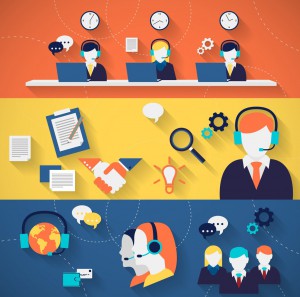Every company has customers, so every company must pay attention to customer service. In our increasingly connected culture, where every meal, hotel stay, attraction, and service can be rated and reviewed by the masses on yelp!, Trip Advisor, Google, or any of the other countless websites, organizations interested in growth have got to get it right. One bad interaction can lead to a review that lives forever on the Internet. Usually, it’s the little things – and how you recover from them – that make a big difference.
Most every organization looks at the big things. Airlines generally get their planes in the air on or close to schedule and most bags get to where they should go. Hotels will have a room for you if you have a reservation. The supermarket will be open, the lights will be on, and the registers will be ready. Big stuff is the price of admission; little things separate the elite from the rest. Here are a couple of examples of how little things can make for a bad experience.
One of our consultants shared this story: I needed to pick up some nutritional drink for my son. The product is sold in a four-pack for about 10 dollars. I went to the store, picked up two four-packs and went to pay. The cashier rang eight bottles as one item. When I corrected her, telling her she only charged me for one instead of two, she said, “Wow! That’s really expensive. I didn’t realize that was two packages. That’s really expensive.” In the end, I did the right thing by pointing out her error, and in return, I was reminded of the price tag and almost regretted pointing out the error.”
How could the cashier have done a better job? At the least, she could have thanked the customer for being honest by pointing out the error.
Another member of our team recently had a home repair done by a local company. The work was warranted for a year, and soon after it was completed, something went wrong, requiring the company to come back to redo the work. After two unreturned phone calls, a letter was sent that finally got a response.
Clearly, a process was needed to improve responsiveness to phone calls.
Here are some idea about boosting your company’s customer service performance by investing in your people who deliver it every day.
Hire people who care about customer service. What does your selection process include? If you are hiring customer-facing employees, consider including behavioral interview questions for which the candidate must give you an example of competent customer service recovery. Role play common scenarios. Those who have done it well before will do it again.
Lead with a customer service attitude. Everyone in the organization – from the CEO to the first-level supervisor – must embrace and model strong service delivery.
Train and empower your team. Customer service training combined with employee empowerment – allowing your people to fix problems on the spot – makes a huge difference. Online retailer Zappos is known for empowered people who can make decisions to solve problems without getting supervisor approval. If you have hired and trained the right people, why not trust them?
Recognize service champions. People generally repeat the behaviors that get rewarded. Does your organization have a formal program to recognize and reward its service superstars? If not, why not?
Train for recovery. Things go wrong. Prepare for it. Spend time training on problem clarification, solutions exploration, and satisfaction confirmation. Statistics show that customers who have had a problem that was quickly resolved are more likely to be loyal to your company than those customers who never had a problem at all. We don’t want there to be problems, but recognize them as opportunities to bolster loyalty, and your team will look forward to the chance to be the next service heroes.
Measure It. How do you know if your customers are happy? How likely are they to refer you to others? How are you performing over time? Are you better this year than last? Mystery shoppers, surveys, and calls to customers can give you insight that might not be possible otherwise.
Customer service will never go away as a top priority. Leaders who embrace the challenge and view it as a way to differentiate their organizations from the competition will win. What can you do right now to better position your company to deliver superiors service? Try some of the tips above and let us know how it goes.
===
Learning Dynamics offers powerful customer service training and mystery shopping services. Exceeding Customer Expectations can help your entire company enhance its service delivery efforts. Contact us today for more information.


